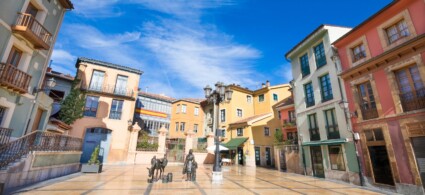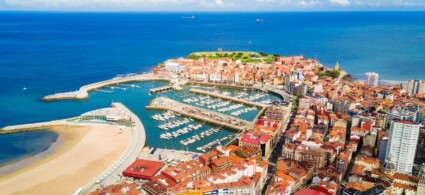

Come and visit a region with a noble past, still known today as the Principality of Asturias: it is a green land in the north of Spain, squeezed between the ocean and steep mountains that rise only 20 km from the sea.
Crossed by the Camino del Norte, the coastal variant of the famous Camino de Santiago, it is an ideal destination for those who want to get to know a Spain far from the stereotypes, for those who love the feeling of freedom that comes from walking with the wind in your face and for those who want to spend carefree afternoons on solitary, wild-looking beaches.
Two-wheelers can ride the Senda del Oso, a 20 km long old mining railway that once connected the two villages of Tuñon and Entrago. The luckiest cycle tourists will manage to spot a Cantabrian bear!
Asturias is also a region for romantic souls in search of picturesque views and even more so for gourmet travellers in search of mouth-watering delicacies. In Asturias, more than 100 different types of cheese are produced, including the famous Cabrales, delicious fish and seafood dishes are cooked, and ancient recipes are still prepared over a slow fire, just like in the old days.
If the queen of the table is the fabada, in the glass the undisputed king is the cider, the Asturian drink par excellence. Sit down at the table of a traditional cider house and watch the very special way the cider is poured into the glass, a ritual that requires considerable balancing skills! Then drink quickly, as the Asturians do so as not to lose the particular aromatic notes released by the ‘descanciar’ method.
Surrounded by natural beauty and pampered by the pleasures of the senses, you can regenerate body and soul in Asturias!
So many places of interest in Asturias! Between seaside towns, mountain villages, picturesque beaches and bays, rock-hewn churches, majestic cathedrals, traditional cider houses and much more there is enough to see and do for a week or more. Here are the top attractions.
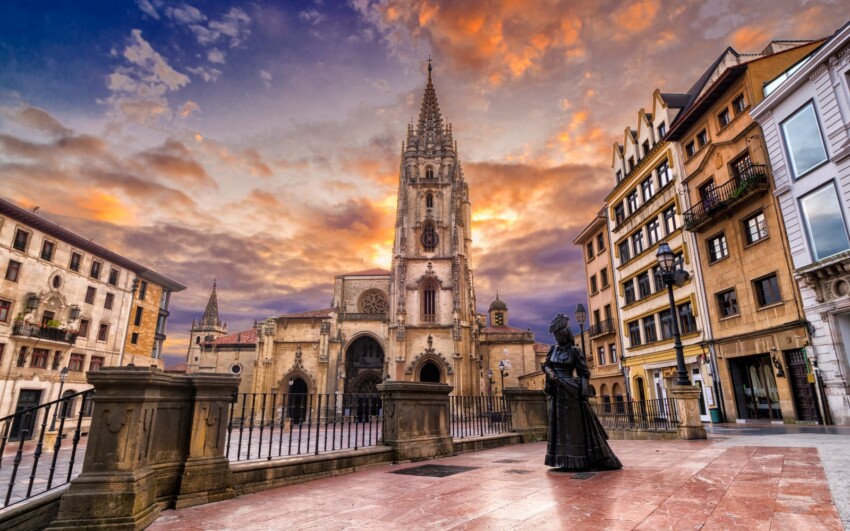
The capital and spiritual heart of the region, Oviedo is an elegant city full of stately palaces, Romanesque churches, contemporary sculptures including Botero’s Nativity and a couple of interesting museums.
The city’s big attraction, however, are its cider houses where you can enjoy the region’s typical drink in the traditional way, served according to the very special rite of descanciar. The most famous cider houses in Oviedo are concentrated in Calle Gascon, which has been unofficially renamed ‘Boulevar de la Sidra’ for this reason.
Oviedo’s architectural jewel, however, is its magnificent Cathedral, a masterpiece dating back to the 16th century that mixes different architectural styles.
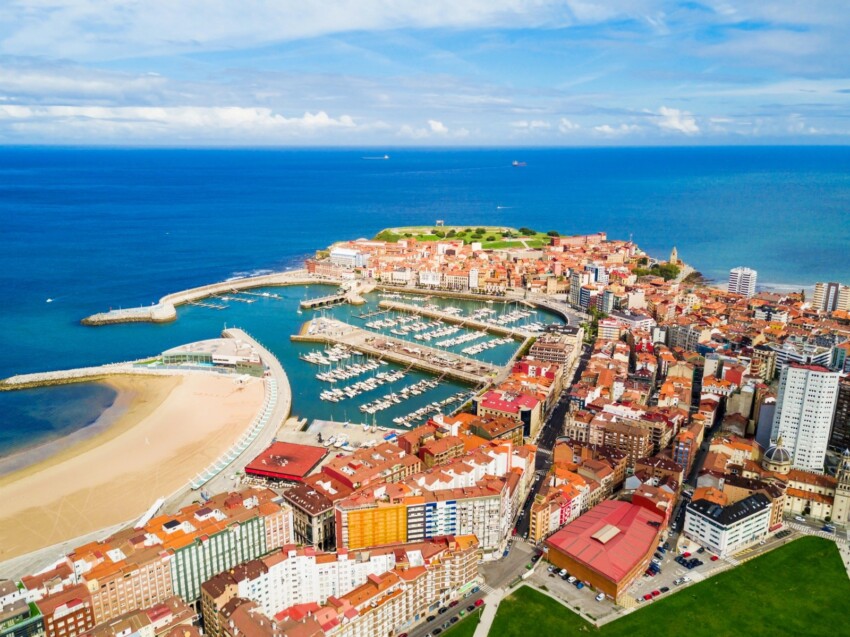
The largest city in Asturias was once an uninviting industrial city, but has managed to revitalise itself with the creation of parks, pedestrian streets, art galleries, waterfront promenades and a lovely marina.
It is certainly not a picturesque fishing village, but Gijón is worth a visit for its vitality and numerous entertainment opportunities.

Avilés surprises visitors with a fascinating contrast between its perfectly preserved medieval heart and a lively contemporary cultural scene.
The historical centre is a jewel of Asturian medieval architecture, with its characteristic arcades and aristocratic palaces lining cobbled streets. Calle Galiana, the main artery of the old town, enchants with its 13th-century arcades, while the Plaza de España houses the imposing Church of San Nicolás de Bari, a remarkable example of Asturian Gothic.
The Centro Cultural Internacional Oscar Niemeyer is a symbol of the city’s modern renaissance. This futuristic complex, designed by the famous Brazilian architect, has become a cultural landmark with its programme of international events, exhibitions and shows.

One of the most visited seaside villages in Asturias is Llanes, a village close to some of the most beautiful beaches in the region: the striking Playa de Cuevas del Mar and the very special Playa de Gulpiyuri. The latter is an inland beach, separated from the sea by a rocky promontory: the water comes through a cavity in the rocks.
The historical centre of Llanes is also pretty, with its medieval tower, the remains of defensive walls, an elegant 16th century palace and many viewpoints.
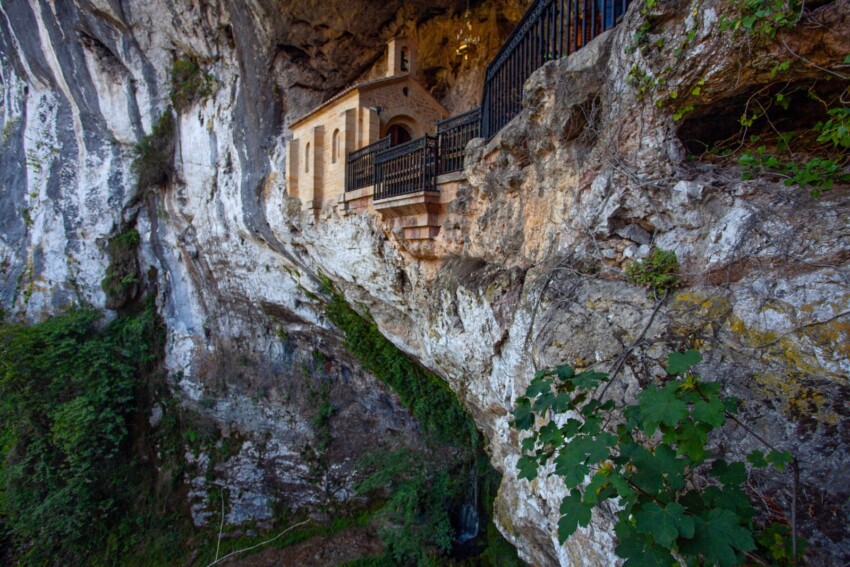
History and nature meet in Covadonga. The entry point to the Picos de Europa National Park, Covadonga is also the place where the Christians led by King Pelagius achieved their first historic victory against the Muslims in 722, initiating the Reconquista.
The top attraction is the famous Sanctuary of Covadonga, an important place of pilgrimage comprising a majestic basilica and a small chapel built inside a cave; from the rocks of the cave flows a waterfall that forms a small lake.
Both churches are set in beautiful natural surroundings, but it is the tiny chapel, far more humble than the lavish basilica, that fascinates visitors the most. Be prepared for long queues to admire it.
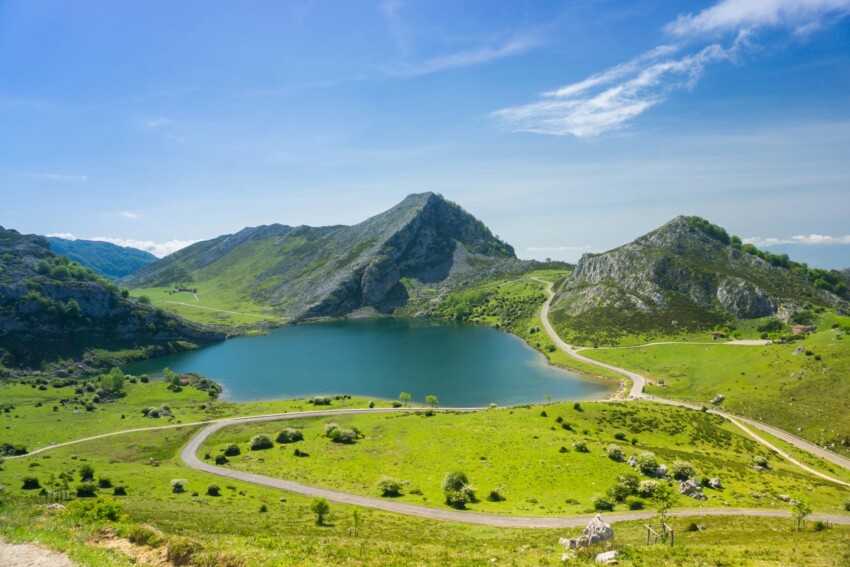
Asturias is home to the highest peaks of the Picos de Europa, the unique mountain range in northern Spain that rises only 20 km from the sea, creating steep slopes interspersed with deep gorges and ravines.
The Picos de Europa National Park is the first national park established in Spain, a paradise for those who love mountains and nature.

The ideal place to get to know the traditional Asturian way of life is the quaint village of Taramundi, famous for its handicrafts of wool and quality cloth.
You can visit the workshops and museums dedicated to this activity that is so important to the local economy, after which you can walk along the ‘Ruta del Agua’, a network of picturesque paths through the countryside. The roar of water from torrents and waterfalls will keep you company.
In the following map you can see the location of the main places of interest mentioned in this article.
The gateway to Asturias is Oviedo, its capital. The city also has an international airport, connected by convenient direct flights operated by the Spanish low-cost airlines Vueling and Volotea.
An alternative would be to land at Santander airport and then continue your journey with a rental car along the A8 motorway heading west.
Asturias offers a wide range of accommodation that reflects the authentic character and rich tradition of this northern Spanish region.
Rural farmhouses represent the essence of Asturian hospitality. These carefully restored old stone dwellings offer a unique experience surrounded by the nature of the valleys and mountains. Many of these farmhouses are run by local families who hand down recipes and traditions from generation to generation.
In the main cities such as Oviedo, Gijón and Avilés, you will find modern hotels of different categories, from affordable luxury to more economical options. The historical centre of Oviedo, in particular, is home to boutique hotels in historic buildings, combining contemporary comfort and period atmosphere.
Along the coast, pueblos marineros offer characteristic sea-view hotels and family-run guesthouses. Locations such as Llanes, Lastres and Cudillero are dotted with establishments that allow visitors to enjoy ocean views and authentic fishing village life.
In the Picos de Europa, mountain lodges and small rural hotels provide ideal bases for trekkers and nature lovers, combining rusticity and essential comfort.
The autonomous community of Asturias is located in the western part of northern Spain. It borders the Spanish regions of Cantabria to the east, Castile and Leon to the south, and Galicia to the east. In the north it is entirely washed by the Cantabrian Sea.
Due to the particular conformation of the territory, Asturias is not crossed by any major rivers but one of them, the Cares, is famous for carving a 9-kilometre-long canyon in the Picos de Europa mountain massifs.
The highest peak is Mount Torrecerredo (2648 metres) but the best known is Naranjo de Bulnes, easily recognisable by its peculiar conical shape with almost vertical walls (2519 metres).
